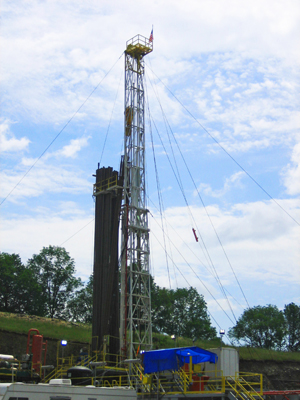
New Environmental Protection Agency standards that aim to cut air pollution from oil and natural gas produced through hydraulic fracturing have received tempered praise from industry groups and mixed reviews from environmental organizations.
The energy industry prefers the rule's Jan. 1, 2015, compliance date to an earlier EPA proposal's tighter deadline. Environmental organizations call the regulation, announced on April 18, a good first step in improving public health but say EPA gave in too much to industry by extending the compliance deadline.
Jim Kohlhaas, vice president of strategic energy projects for McLean, Va.-based Science Applications International Corp. (SAIC), says that, in the long run, the new regulations probably will offer engineering and construction firms only limited opportunities for new business.
For firms such as SAIC, most of the potential work will come in shale formations where extensive pipelines and other supporting infrastructure do not yet exist, such as the the Bakken formation in North Dakota and Montana. Kohlhaas adds, "I think the opportunities … lie in localized uses for this captured gas so it doesn’t have to be moved very far."
Hydraulic fracturing, or “fracking,” is a technique used to release oil and natural gas by pumping large amounts of water, sand and chemicals into the ground where oil and gas are locked in shale or other geological formations. EPA says an estimated 13,000 new and existing natural-gas wells are fractured or refractured each year.
When natural-gas or oil wells are newly fracked or refracked, they emit into the air large quantities of pollutants, such as benzene and methane, for days until they are either vented or burned off through “flaring."
The final EPA standards require owners or operators either to flare their emissions or use emissions-reduction technology called “green completions,” which essentially capture any emitted gas and put it back into pipelines, from which it can be used later and sold.
Beginning on Jan. 1, 2015, all new fractured wells will be required to use green completions, EPA says.
The agency says these technologies will reduce 95% of the harmful emissions from fractured wells of volatile organic compounds that contribute to smog and lead to harmful health effects.
Gina McCarthy, the head of EPA’s Office of Air and Radiation, told reporters the new standards are “practical, flexible, affordable, and they’re achievable.” Many well operators already are cutting emissions through green completions or flaring, she said. Some states, such as Colorado and Wyoming, already regulate oil and gas emissions from fractured wells.


Post a comment to this article
Report Abusive Comment